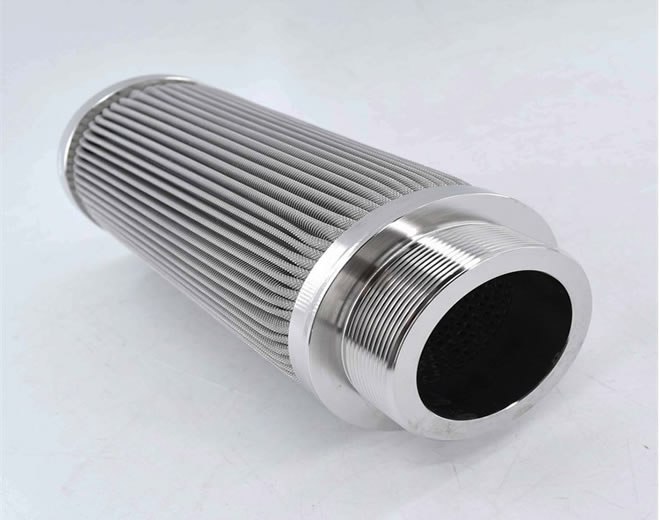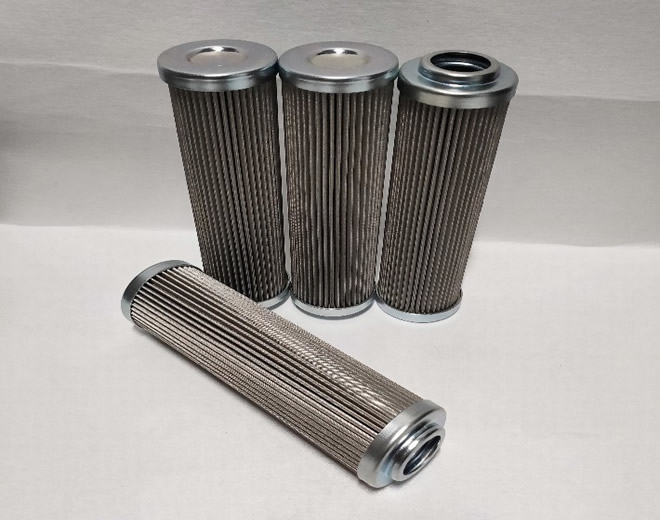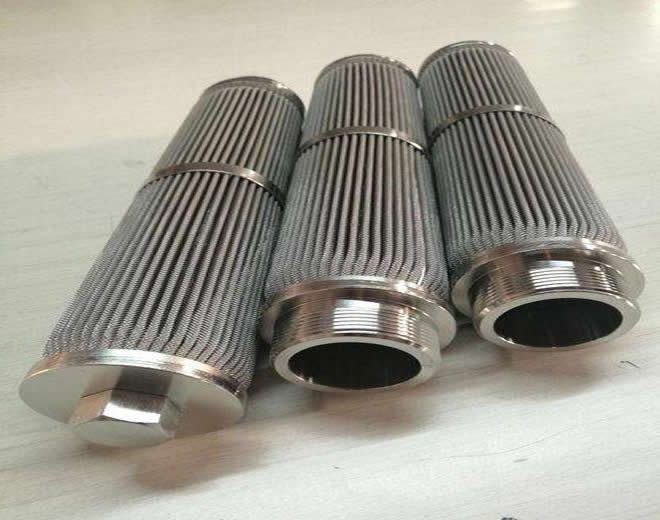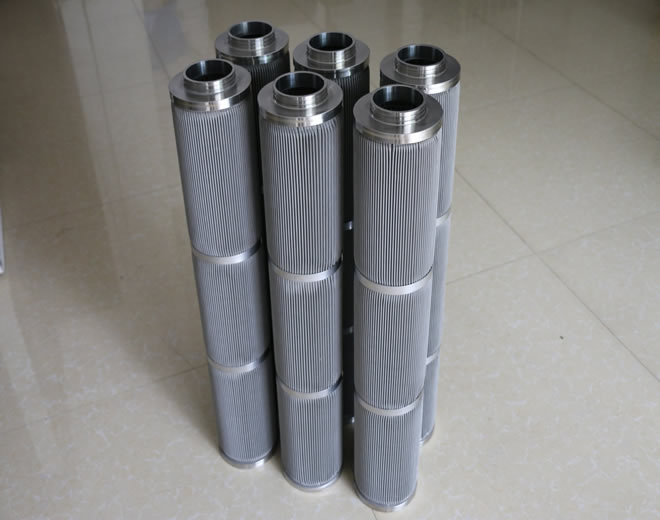









In the field of industrial filtration, where demands for high precision, strength, and flow rates are paramount, the Pleated Wire Mesh Filter Cartridge stands out as a superior choice for critical liquid and gas filtration applications. This article provides a detailed introduction to this essential component.
A Pleated Wire Mesh Filter Cartridge is a cylindrical filtration element constructed from multiple layers of metal wire mesh, formed into a compact unit through a specialized pleating process. Its core features are:
Filter Media: Typically made from high-quality metal wire meshes such as stainless steel (304, 316L), Monel, or Inconel. Depending on the required filtration rating, a single layer or a multi-layer composite structure (e.g., protective layer, control layer, support layer) is used.
Structural Design: The flat, multi-layered wire mesh is precision-folded into a wave-like (corrugated) pattern, then rolled into a core. This core is housed between an inner support skeleton (core) and an outer protective cage, and the assembly is completed by welding with end caps.
This pleated design maximizes the effective filtration surface area within a limited physical space, which is the foundation of its high performance.
Compared to traditional filter bags, sintered cartridges, or fiber filter elements, pleated wire mesh cartridges offer significant advantages:
Absolute Filtration Rating: Utilizing precision-woven mesh, they provide an absolute filtration rating, guaranteeing 100% removal of particles larger than their specified pore size. They offer a wide filtration range, typically from 1μm to 200μm.
Very Low Flow Resistance: The unique pleated structure creates a large filtration area, resulting in a lower fluid velocity per unit area. This leads to an extremely low pressure drop, reducing system energy consumption.
Exceptional Strength and Durability: The all-metal construction provides high mechanical strength and toughness, enabling it to withstand high differential pressures and frequent pulse backwashing without deformation or damage, ensuring a long service life.
Excellent Chemical Compatibility: Metal materials (especially 316L stainless steel) offer superior corrosion resistance, making them suitable for a wide range of chemicals, including acids, alkalis, and organic solvents, even in harsh processing environments.
Easy Cleaning and Regeneration: The primary surface filtration mechanism means contaminants are trapped on the surface of the cartridge, not deep within the matrix. This allows for easy cleaning via online backwashing or offline methods, effectively restoring performance and enabling reuse, which lowers operating costs.
Excellent Temperature Resistance: Capable of withstanding very high (up to 500°C+) or cryogenic temperatures without issues related to thermal plasticity.
Pleated wire mesh cartridges primarily operate on the principle of surface filtration:
Sieving: As the fluid passes through the cartridge, particles larger than the mesh pore size are directly intercepted on the surface.
Filter Cake Formation: Over time, the intercepted particles accumulate on the surface, forming a layer of "filter cake." This cake itself acts as an efficient pre-filter layer, capable of trapping even finer particles.
Backwash Regeneration: When the pressure drop reaches a set limit, a reverse flow of clean fluid (gas or liquid) is applied from the inside of the cartridge outward. This dislodges and removes the filter cake layer, regenerating the cartridge.
Due to their reliable performance, these cartridges are widely used in:
Petrochemical Industry: Polymer melt filtration, catalyst recovery, process gas purification, amine filtration.
Pharmaceutical Industry: Precision filtration of active pharmaceutical ingredients (APIs) and solvents, sterile air filtration.
Food & Beverage: Filtration of beer, wine, edible oils, and syrups.
Electronics Industry: Filtration of high-purity chemicals (e.g., etchants, photoresists) and in ultrapure water systems.
Nuclear & Power: Secondary loop water treatment in nuclear islands, generator hydrogen cooling systems.
Environmental & Water Treatment: Pre-filtration for reverse osmosis (RO) desalination, water reclamation.
Selecting the appropriate cartridge is crucial for optimal system performance. Consider the following factors:
Filtration Rating: Determined by the size of the target contaminant to be removed.
Material Selection: Based on the fluid's chemical properties (corrosiveness), temperature, and operating pressure. Choose the suitable metal alloy (e.g., 304, 316L) and seal type.
Dimensions: Determine the cartridge length, outer diameter, and connection type (e.g., 222, 226, double O-ring, plain end).
Operating Conditions: Understand the fluid viscosity, operating flow rate, allowable pressure drop, and temperature.
Regeneration Needs: If backwashing is planned, select a cartridge specifically designed for this purpose, with higher structural strength.
Installation: Ensure system piping is clean before installation. Lightly lubricate the O-rings and insert the cartridge vertically into the housing, avoiding side loads.
Pressure Drop Monitoring: Monitor the inlet-outlet differential pressure during operation. A clean cartridge has a very low initial pressure drop. A sustained increase indicates the need for cleaning or replacement.
Cleaning Methods:
Online Backwashing: For cartridges designed for it, use clean compressed air or liquid for reverse flow cleaning.
Offline Cleaning: Remove the cartridge and clean using ultrasonic cleaners, solvent soaking, or low-pressure water jets.
Replacement: Replace the cartridge when the pressure drop rises rapidly even after repeated cleaning, or if physical damage is observed (e.g., mesh breakage, weld failure).